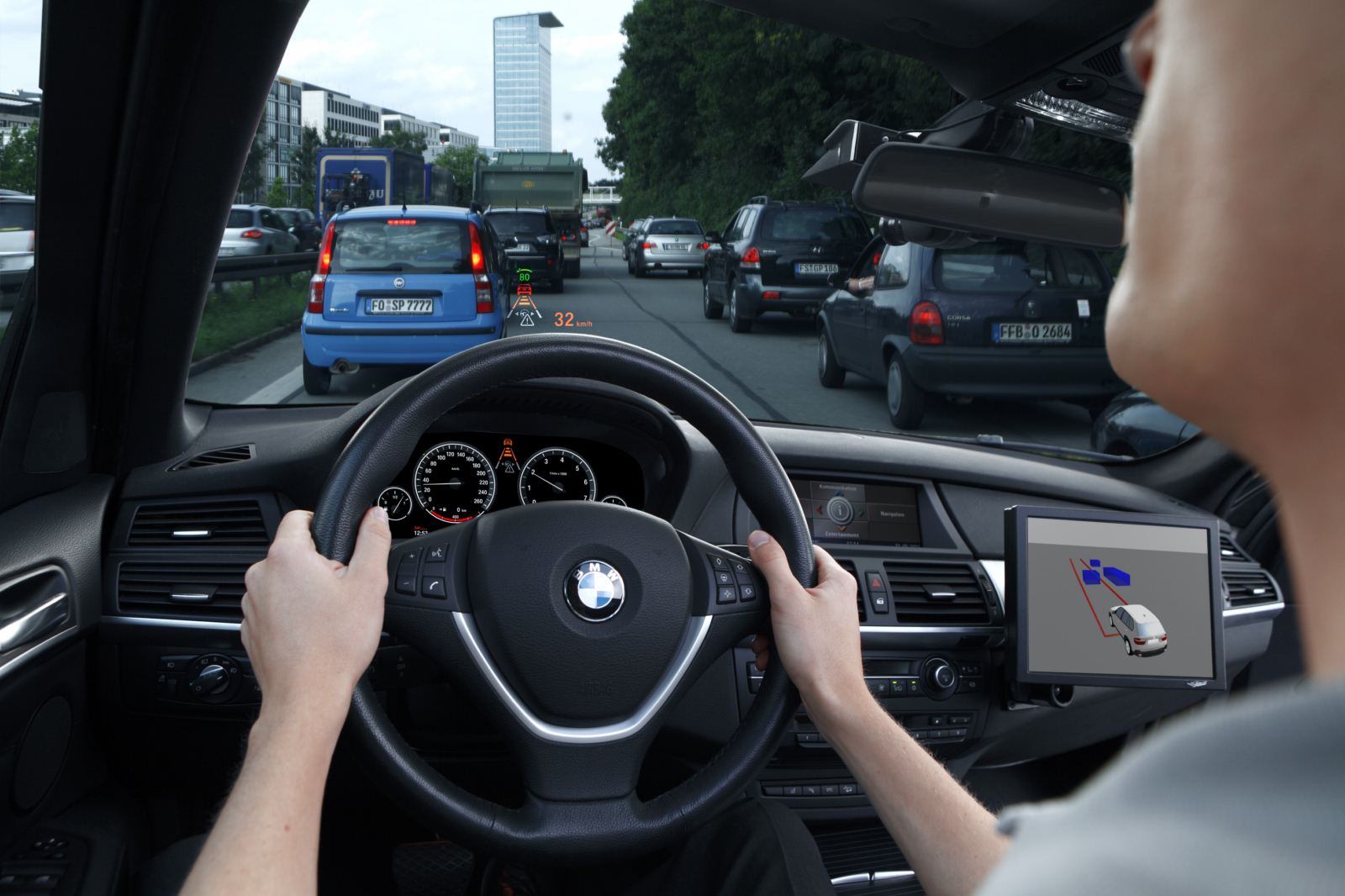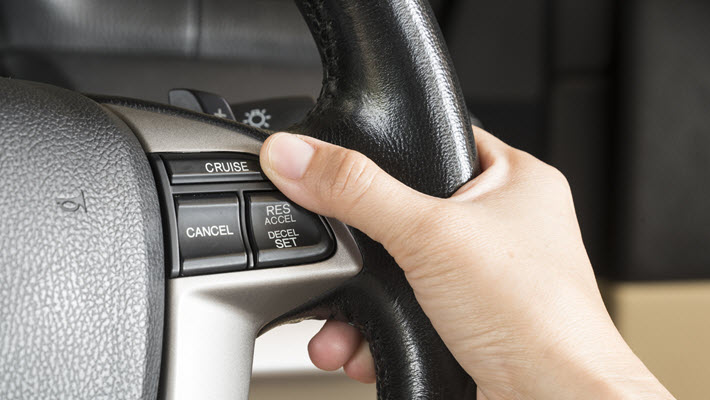Table Of Content

Unlike other types of cruise control systems, which maintain a set speed, a speed limiter prevents a vehicle from exceeding a certain speed limit. Intelligent cruise control goes even further, using artificial intelligence to learn the driver’s behaviour and adjust the speed of the vehicle before the driver takes action. Stop-and-go cruise control is ideal for use in heavy traffic and can bring the vehicle to a complete stop if necessary, while speed limiters are designed to limit the maximum speed of the vehicle. Each type of cruise control system has its own advantages and disadvantages, and drivers should choose the one that best suits their needs. This improvement significantly expanded the continuous operation time of the cruise control function, as automation allowed to control both the acceleration and braking of a vehicle. This allowed the driver to travel for longer distances with their feet off the pedal, even in moderate traffic situations on the motorway.

Motorcycles with Adaptive Cruise Control — A Complete List
ACC systems allow you to set a desired speed until your vehicle encounters slower-moving traffic. Then it will brake to maintain a set distance from the car ahead. Once the traffic starts moving again or if there is no longer a car in the lane ahead, ACC will accelerate to resume the previous set speed. Although ACC systems may take some getting used to, our survey respondents told us they appreciated the stress relief the feature brings. ACC uses radar, laser sensors or cameras to monitor the vehicle ahead and adjust your speed accordingly to maintain a preset following distance.
Adaptive Cruise Control FAQs
Researchers hack adaptive cruise control, then show how to make it safer - University of Alabama at Birmingham
Researchers hack adaptive cruise control, then show how to make it safer.
Posted: Mon, 10 Oct 2022 07:00:00 GMT [source]
ICC not only maintains a safe distance from the vehicle ahead but also adjusts the speed of the vehicle to match the flow of traffic. Beyond the similar naming, there are several different features that adaptive cruise control is often bundled with to provide sensor fusion. One example of this is a feature called ACC with Stop and Go or ACC with Traffic Jam Assist. This adds the ability to come to a complete stop via automatic braking and then re-accelerate to the car’s set speed as traffic moves.
The TomTom ADAS Map: designed for intelligent cruise control use cases
Just as with traditional cruise control, the adaptive cruise control system requires drivers to choose their preferred speed. Next, ACC requires drivers to set their preferred following distance from the vehicle’s pre-set options. “Most ACC systems can only be set to speeds above 20 mph but will slow the vehicle to speeds below that in stop-and-go traffic,” she says. “There are a few systems out there that don’t bring the car all the way to a stop but instead just shut off at low speeds.
The TomTom ADAS Map includes the following attributes:
With future refinement, ACC can move beyond just being a convenience feature and provide truly safe semi-autonomous driving. Adaptive Cruise Control calibration takes place when the camera, lidar, and radar sensors that inform your vehicle’s actions are re-aligned to improve or re-establish sensor accuracy. Like other ADAS systems, ACC needs to have sensors recalibrated after a collision and many vehicle services like windshield replacement.
The new BMW Motorrad Active Cruise Control (ACC) - BMW Press
The new BMW Motorrad Active Cruise Control (ACC).
Posted: Tue, 30 Jun 2020 07:00:00 GMT [source]
The Tracer 9 GT (without +) is “affordable” for its class (of middleweight sport tourers), that is, and certainly cheaper than other motorcycles in this list for the 2023 model year. The GT+ will also definitely punch under the weight of the Multistrada V4S, for example. The Super Adventure S is the street-oriented super tourer in the Super Adventure line.
How Does Adaptive Cruise Control Work?
I would like to see active cruise on the Africa Twin at least, but I don’t expect to for a few years. Harley-Davidson has also filed a patent for adaptive cruise control, showing maybe they don’t want to use the Bosch system. What’s kind of surprising is that some brands haven’t released any motorcycles with adaptive cruise control — even when some are releasing multiple, and when Yamaha has it on a middleweight. Kawasaki has for a long time been the Japanese manufacturer to bring high-tech features to everyday motorcycles earlier than the others. This was true with ABS, Traction control, and even cornering ABS (the consumer-oriented 2017 Kawasaki Ninja 1000 had cornering ABS). The Kawasaki H2 SX is the more accessible sport tourer, made for everyday riding, despite the very high power number.
Liquid Cooling vs Air Cooling in Motorcycles — All the Facts
Intelligent cruise control use cases rely on data beyond sensors. The TomTom ADAS Map is designed for this purpose, providing a range of attributes that power modern ADAS systems. Adaptive cruise control helps drivers adjust the speed of their vehicle. Adaptive cruise control automatically controls the acceleration and braking of a vehicle.
Cruise control safety tips
Some call it adaptive cruise control as the root and then tack something onto it. Radar-based sensors can be hidden behind plastic fascias; however, the fascias may look different from a vehicle without the feature. For example, Mercedes-Benz packages the radar behind the upper grille in the center and behind a solid plastic panel that has painted slats to simulate the look of the rest of the grille. No. There are a lot of variations between manufacturers and even differences from model to model under the same marque. Some ACC systems only work between 40km/h and145km/h and others can be active from stop all the way to 250km/h, requiring a touch of the accelerator to get going again if it does happen to bring you to a stop.
As stated earlier, some systems will bring your vehicle to a complete stop to match traffic flow. Even more intelligent systems can then accelerate as the traffic flow resumes. These are called assisting, predictive, and multi-sensor systems. They just updated the Suzuki Hayabusa to the 3rd gen — that would have been a prime candidate. But Suzuki is a little slower to bring premium features to their bikes, which I don’t mind, because it keeps their bikes affordable. When the motorcycle’s ACC system detects that you’re approaching another vehicle too quickly, or that you’re already too close to one, it backs off on the cruising speed until you’re at a safe distance.
Keith earned a master’s degree in public health from Tufts University. Here’s a rundown of the terms the various carmakers use for ACC, even those that simply call it adaptive cruise control. I've been an obsessive motorcycle nut for over thirty years and in six continents. I've been riding since I was 12, have owned dozens of motorcycles, and ridden many more.

Check your car’s owner manual for confirmation of that function on your car. With standard cruise controle, the vehicle will maintain the set speed regardless of changes in the road conditions, such as uphill or downhill slopes or curves. To deactivate the system, the driver can either apply the brakes or turn off the cruise control switch.Standard cruise controle can be found on many vehicles, from entry-level models to high-end luxury cars. Adaptive cruise control (ACC) is like traditional cruise control, but smarter.
In this article, we will explain adaptive cruise control and how it works, provide examples of ACC features in ADAS packages, and explain the importance of adaptive cruise control calibration. When carmakers pitched cruise control to the American public more than half a century ago, they framed it as a way to maintain a safe, consistent speed on the highway and a path to conserving fuel. Although the fuel savings were minimal, both claims were accurate. Just like cruise control, Adaptive Cruise Control uses the cruise control ON/OFF, CANCEL, SET and RESUME buttons on the steering wheel. Moto Guzzi’s active cruise control is called the “PFF Rider Assistance Solution”, which uses “4D imaging radar”.
The driver must be prepared to resume control in case of an emergency but otherwise doesn’t have command of the car. That is, the driver’s hands can be off the steering wheel and their attention elsewhere. Heavy rain, fog and snow can interfere with the capabilities of these systems, and heading into the sun can throw out the camera-based systems. Windy roads and cars that dive in to gaps in front of you can confuse the ACC which may not react in time.

No comments:
Post a Comment